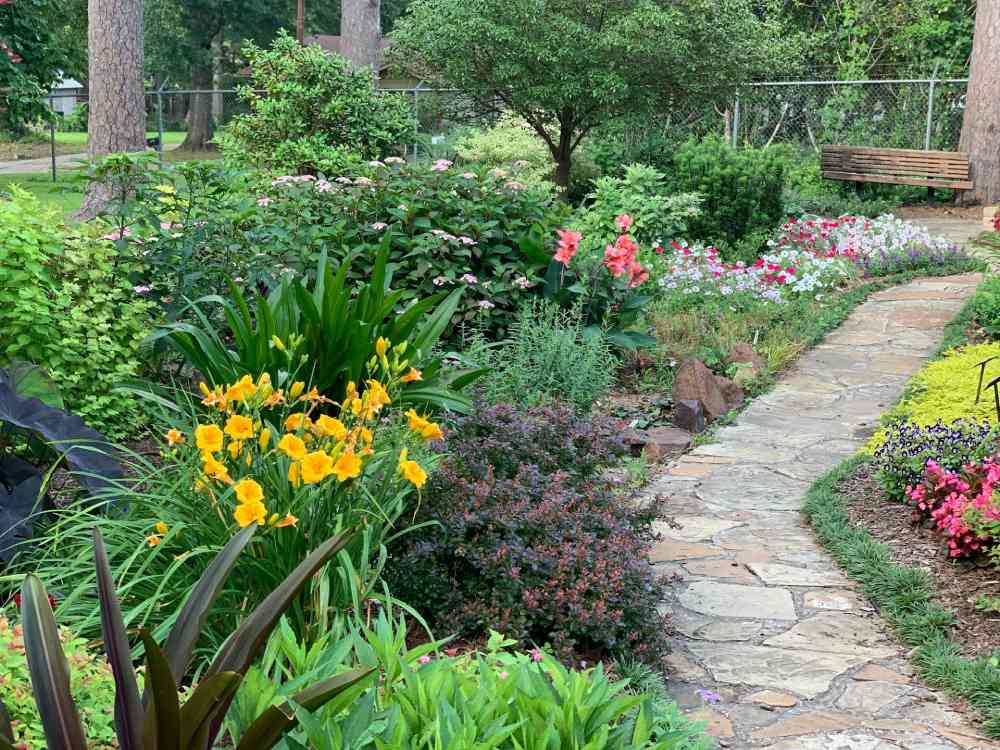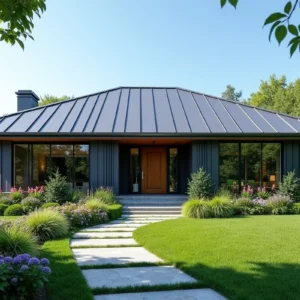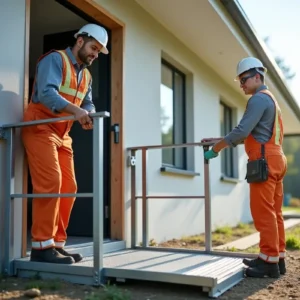As more homeowners seek to expand their living areas outside of their houses, outdoor living areas are growing in popularity. Not only do these spaces provide a unique area for entertaining, but they also increase the value of your property.
According to a study by the Houston Chronicle, homes with well-designed outdoor areas can see a significant return on investment. From lush gardens to modern patio pavers, enhancing your outdoor space can turn a good living environment into a great one.
Create a customized haven in your backyard by adding amenities that fit your lifestyle, such as a peaceful water feature or a toasty fireplace. More importantly, such amenities are not just aesthetic additions; they contribute to your overall well-being by providing a tranquil space to unwind.
Imagine stepping out onto a well-designed patio at the end of a long day, relaxing with a glass of wine, and watching the sunset. This extension of your living space not only enhances your quality of life but also provides a versatile venue for social gatherings, thus improving your house’s social value.
Contents
Types of Outdoor Features to Consider
- Patios: The perfect spot for family gatherings or a quiet evening. Patios create a versatile outdoor space where you can dine, relax, and entertain guests. They can be customized with various materials, from concrete to flagstone, to match the aesthetic of your home.
- Retaining Walls: These not only add an aesthetic appeal but also help in soil conservation. Retaining walls can transform a steep, unusable yard into a beautiful, functional space. They are perfect for creating terraced gardens or adding dimensions to a flat landscape.
- Walkways: Ideal for guiding guests through your garden and tying all the elements together. Walkways can be created using various materials, from gravel to pavers, and provide a safe and clear path for navigating your garden or yard.
Planning Your Outdoor Space
Before diving into construction, it’s crucial to have a detailed plan. Start by assessing your space and how you intend to use it. Sketch a layout, consider weather patterns, and choose vegetation that will thrive in your local climate.
Websites like Better Homes & Gardens offer great planning resources to help you get started. This preliminary planning phase helps you visualize your dream space and foresee any potential challenges.
Identifying focal points, such as a central seating area or a garden feature, can help streamline the planning process. Also, think about the flow of movement within the space—ensure pathways are intuitive and that the layout facilitates easy navigation.
Taking the time to plan will save you from costly mistakes and ensure that every square foot of your outdoor area serves a purpose.
Popular Materials for Patios and Walkways
Material choice can define the look and feel of your outdoor area. Common options include:
- Concrete: Durable and customizable with various finishes. Concrete is a popular choice due to its versatility and relatively low cost. It can be stamped, stained, or textured to mimic more expensive materials like brick or natural stone.
- Brick: Offers a classic, timeless look. Brick is known for its durability and aesthetic appeal. It has a classic appearance that can be organized in different ways, including basketweave or herringbone.
- Natural Stone: Perfect for a more organic and rustic appearance. Natural stone like flagstone or slate offers unique color variations and textures, giving your patio or walkway a distinctive, earthy charm.
Each material has its pros and cons, so consider factors such as costs, durability, and maintenance needs when making your choice. For instance, while natural stone may be more expensive, its longevity and minimal maintenance could make it a cost-effective option in the long run.
The Role of Retaining Walls
Retaining walls is essential for managing slopes and adding structure to your landscape. They serve multiple purposes: preventing erosion, creating usable garden spaces, and adding aesthetic value. Retaining walls can effectively manage water flow, which is crucial for preventing runoff and soil erosion.
Various materials, including stone, concrete, and wood, can be utilized based on your practical requirements and personal taste in design. While concrete retaining walls can be tailored with different finishes to match the architecture of your home, stone retaining walls offer a natural look and blend in flawlessly with the landscape. Timber walls offer a rustic vibe but may require more maintenance over time.
Maintaining Your Outdoor Area
Regular maintenance is key to keeping your outdoor space looking fresh and inviting. This includes cleaning patios and walkways, sealing materials to protect against weather damage, and trimming plants to prevent overgrowth. Regular upkeep ensures that your investment remains beautiful and functional for years.
Developing a monthly maintenance checklist can help ensure that all aspects of your outdoor area get the attention they need. Tasks like clearing debris, checking for weed growth, and inspecting structures for any damage should be part of your routine. Simple actions like these can prevent minor issues from becoming costly repairs.
Budget-Friendly Tips for Your Outdoor Project
Building an outdoor oasis doesn’t have to break the bank. Consider these cost-saving tips:
- DIY smaller projects like planting and basic landscaping. These tasks can save labor costs and allow you to personalize your space even more.
- Repurpose materials whenever possible. Old bricks, wood, and even furniture can be upcycled to create unique outdoor features without spending a fortune.
- Shop sales and seasonal discounts for outdoor furniture and plants. You may still get the appearance you want and save a lot of money by timing your purchases.
Another cost-effective strategy is to complete your project in phases. Prioritize essential elements first, such as the patio or plants, and add other features like walkways or decorative items as your budget allows. This approach makes the project more financially manageable and allows you to enjoy a partially completed space sooner.
Hiring a Professional vs. DIY
Deciding whether to hire a professional or go the DIY route can be challenging. For large or complex projects, it may be worth hiring a professional to ensure everything is built to code and structurally sound. Professionals bring expertise and efficiency to the project, which can be invaluable, especially for intricate designs or large-scale installations.
However, DIY can be a rewarding and cost-effective option for smaller or less technical tasks. It allows for greater customization and personal involvement in the project. Plus, the sense of accomplishment you get from creating something with your own hands is irreplaceable.
Ultimately, the choice depends on your skill level, available time, and budget. A good compromise might be to consult a professional for the planning stage and tackle the execution yourself, combining the best of both worlds.





